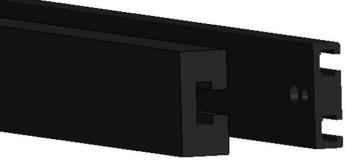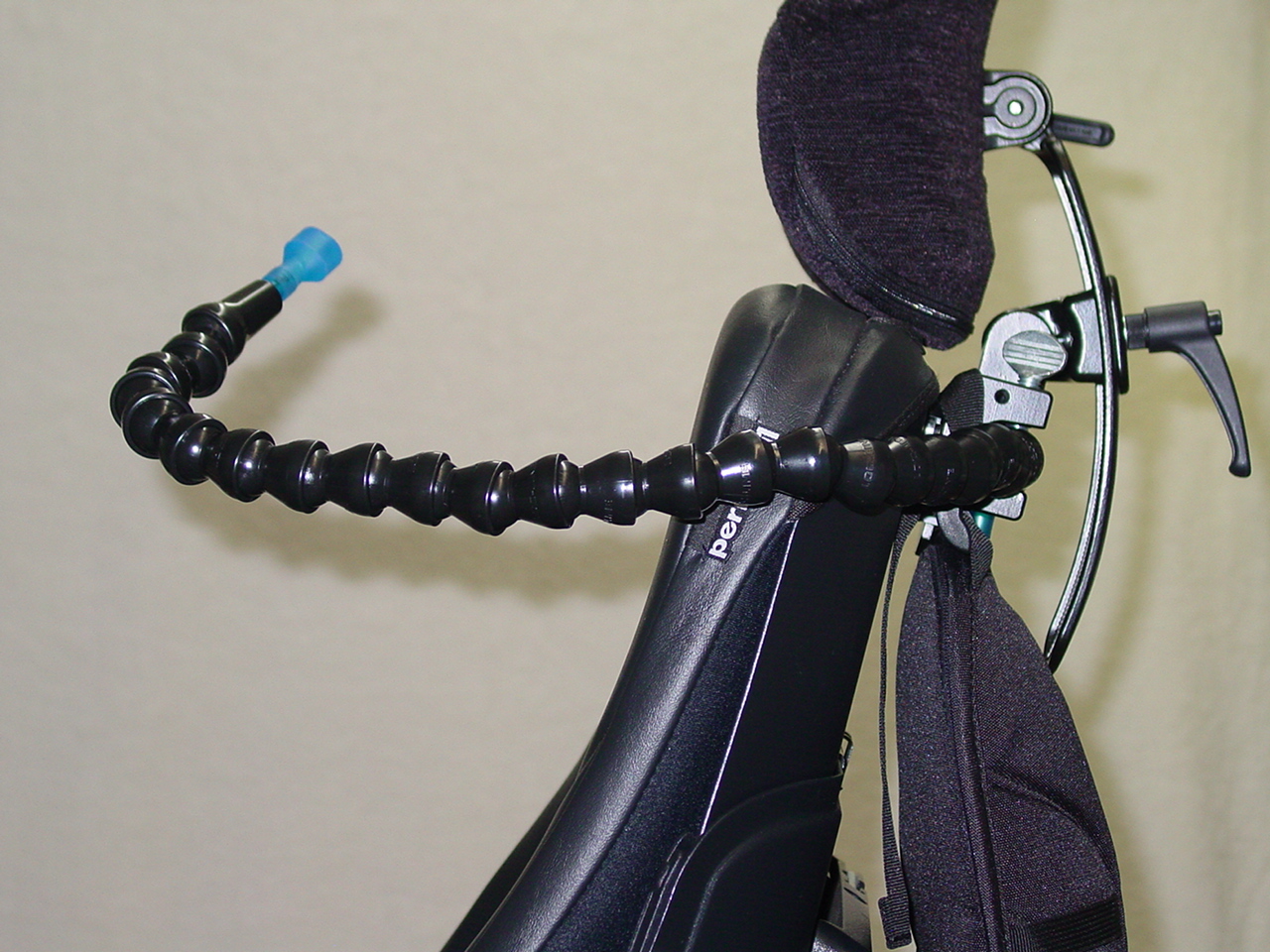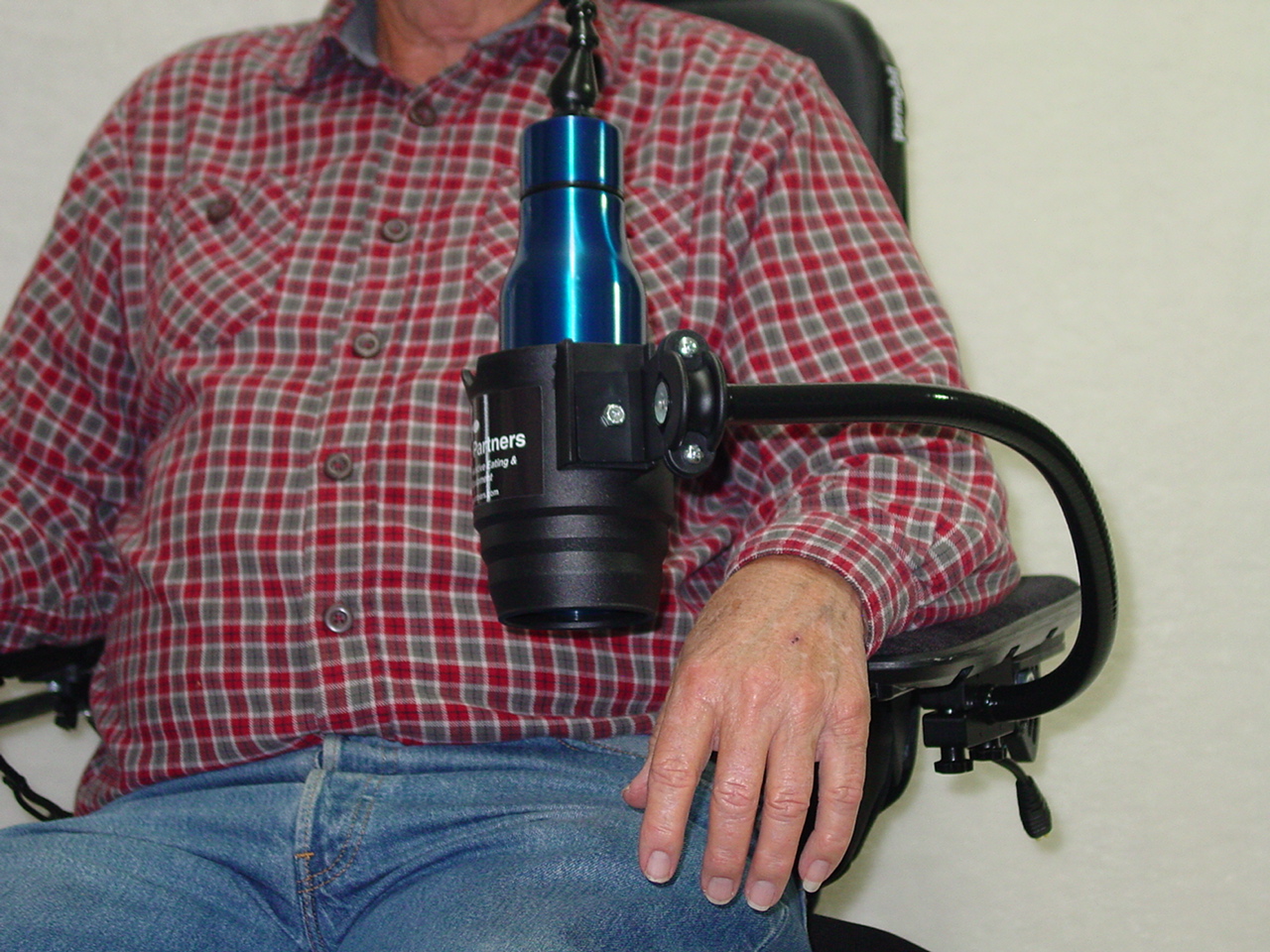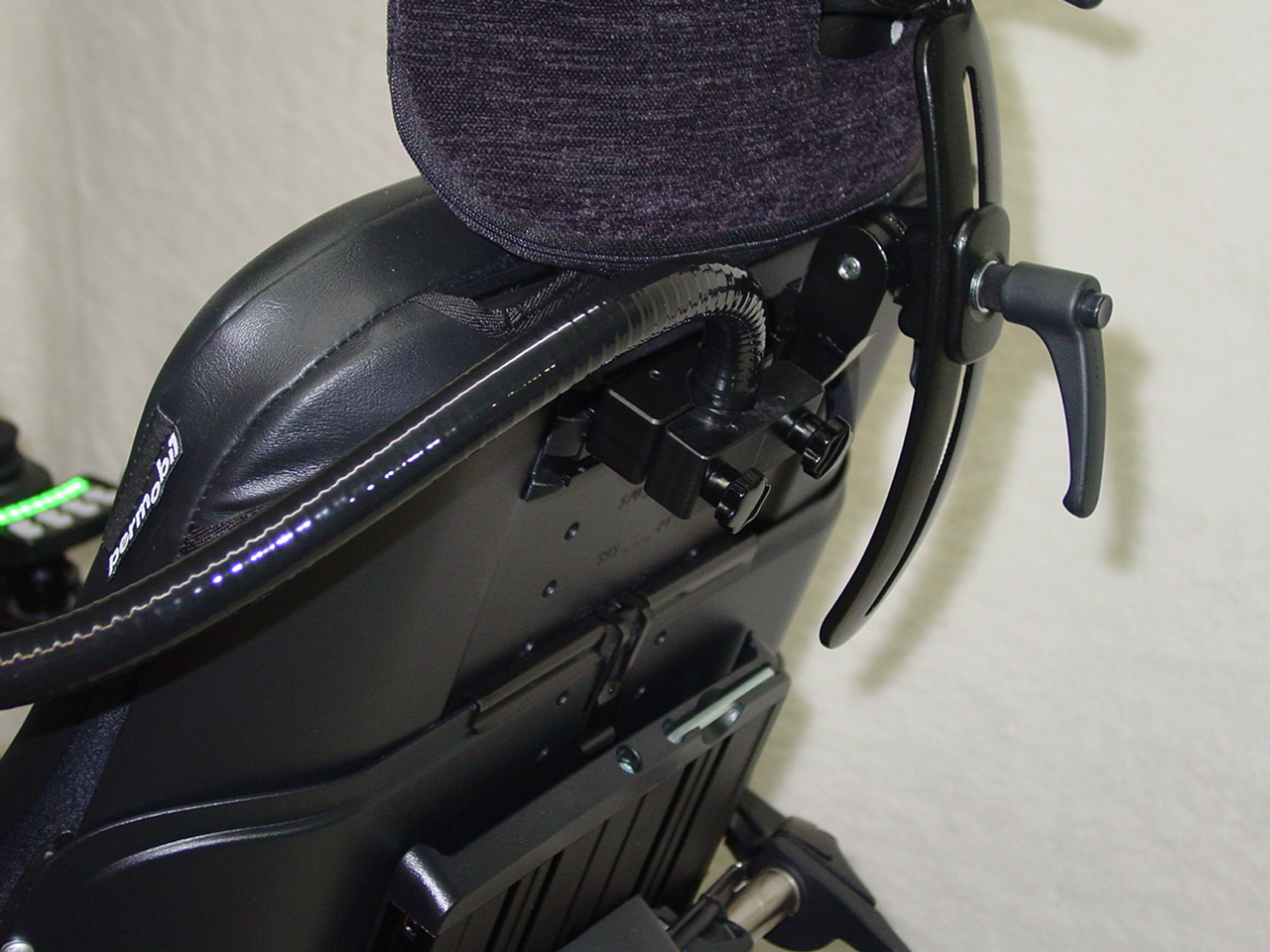July 2019 Independent Eating and Drinking Newsletter
| Independent Eating and Drinking are Wonderful |
 |
| July Newsletter Topics: |
|
| Subscribe to Newsletters |
Gastroesophageal Reflux Disease (GERD)
In last month’s Newsletter the first article discussed Gastroparesis (Delayed Gastric Empty). This month we are continuing the theme of examining problems that occur within the digestive system relating to eating. However, GERD impacts many more people, of all ages, than Gastroparesis.
Gastroesophageal reflux disease (GERD), or acid reflux, is a condition that is a chronic problem for those affected by it. Common symptoms of GERD are heartburn (a burning feeling in the chest), a feeling of food being stuck behind your breast bone, nausea after eating a meal, a cough, a voice that is horse sounding, or a sore throat. Symptoms can worsen at night when lying down. GERD is caused by stomach contents leaking back out of the stomach into the esophagus (the tube that carries food from the mouth to the stomach). Gastric or stomach acid, food and drink, and/or pepsin (a digestive enzyme that’s main function is to break down proteins that have been eaten) may leak out of the stomach. The impact of these substances on the lining of the esophagus can be harmful because they are caustic and the continuous back flow irritates the esophagus and can cause GERD.
Leaking is able to occur because the muscle fibers that form a ring at the base of the esophagus, called the lower esophageal sphincter (LES), do not close off the stomach completely from the esophagus. Therefore, leakage, or reflux can occur. Several factors can contributed to the occurrence of GERD including smoking, alcohol, drinking sodas, obesity, certain medicines, spicy food, eating big meals, eating prior to going to bed, eating too fast, etc.
GERD is one of the most common health problems that occur in adults in the United States. Also, it is not uncommon for infants to suffer from GERD. In babies it can be due to them having a poorly coordinated or under developed intestinal tract and they are otherwise healthy. However, some infants have GERD as a result of problems affecting their brain, nerves or muscles.
It is common for people with disabilities that prohibit them from feeding themselves to be affected by GERD. For those who have a congenital disability, the cause of their GERD may relate to the basis of their disability. However, it can also be triggered by how they are being fed. This also applies to individuals who have an acquired disability. In many cases, people who are fed are provided food too quickly, without time between bites to chew adequately and swallow. Therefore they swallow lumps of food that have not been chewed up into tiny pieces that will digest easily and can cause indigestion, which if occurs frequently can lead to GERD. Swallowing big lumps of food can also increase the risk of choking and/or aspiration. Additionally, many people who are fed are given too large a meal at one time, rather than smaller meals more frequently. This often is a result of limited time on the part of the care provider.
There are several ways of managing GERD. The first that is recommended is making lifestyle changes such as avoiding foods that cause problems, not eating for several hours before bed, not taking aspirins, etc. However, if lifestyle changes do not correct the problem there are several treatments that may be beneficial: medicine; surgery; or endoscopic treatments. There are three main groups of medicines used for treating GERD: antacids that neutralize the acid in the stomach; histamine type 2 receptor antagonists (H2RAs) that cause the stomach to make less acid; and, proton pump inhibitors (PPIs) that also cause the stomach to make less acid. PPIs are better at relieving heartburn and letting the esophagus heal than H2RAs.
For some people medicines do not control their reflux problems and surgery is a consideration. The surgery, called a fundoplication, takes the top part of the stomach and wraps it around the bottom of the esophagus and sews it in place. This reinforces the LES, preventing reflux from occurring. This surgery is performed on children who have reflux problems that are severe enough to produce regular vomiting (in some cases several times a day) and for those who have erosion of the esophagus, or who are aspirating regularly.
The newest treatment for GERD is endoscopic treatment. It is not considered surgery as the treatment is conducted by putting an endoscope down the patient’s throat to perform the treatment. Because of the newness of this treatment there are not enough studies to know how well it works for the treatment of GERD.
For people who are unable to feed themselves, providing them a means to self feed such as a Mealtime Partner Dining System will often reduce or eliminate their GERD because it allows them to select the foods that they want to eat and control the pace and volume of food that they eat. For many individuals this is a simple solution to a chronic problem.
|
Mealtime Partners Slide-Track Mounting Products |
|

|
|
|
Some of the newer models of powered wheelchair have mounting
hardware built into them as an integral part of the chairs
seating system. The hardware takes the form of rectangular rails
that have slots in them that are commonly known as T-slots
(illustrated above). This hardware was intended by the
wheelchair manufacturers to allow them to mount chair
accessories, like the headrest, easily. However, they also allow
other items to be mounted on the wheelchair. Mealtime Partners
refers to these mounting rails as “slide-tracks”. Depending upon
the wheelchair manufacturer, the slide tracks have a single slot
or dual slots in them. Slide-tracks are found in additional
locations, like the back of the seat or under the arm rests, not
just the sides of the seat, on most wheelchairs that utilize the
slide-tracks. Wheelchairs with these slide-tracks often do not have any tubular components to attach the Mealtime Partners wheelchair mounting accessories. Because this is a relatively new way of mounting, Mealtime Partners has expanded its product line to accommodate attaching its drinking and mounting systems to slide-track mounts. Instead of two separate nuts, we use an elongated T-Nut with two screws for a more solid attachment and an attachment method that resists rotation. The differences between wheelchair manufacturers is the size of the T-slot, so we have different T-Nuts to accommodate the differences. Two examples of the Mealtime Partners drinking systems for track mounting are pictured below. |
|

|

|
| Hydration Backpack with Drinking Tube Positioning for Slide-Track (6557) | The Mealtime Partners Front Mounted Drinking System for Slide-Track (5918) |
|
The mounting products for these two drinking systems
are pictured below. On the
left, the Attachment Holder for Slide-Track (Mealtime Partners part number 4673)
is used for the Hydration Backpack with Drinking Tube
Positioning for Slide-Track; and, on the right, the Flex Arm Holder (part number
4970) secures the Front Mounted Drinking System to the
wheelchair track under the wheelchair armrest. (If you purchase
either of these drinking systems for Slide-Track, it will come with
the appropriate clamping system.) T-nuts that attach the Attachment Holder and the Flex Arm Holder, shown below, are available in two sizes. The Permobil "unitrack" slots are slightly smaller than those used by the other manufacturers so the size of slot must be specified when ordering: 1 for UniTrack and 2 for Standard-Track. The smaller T-nut accommodates the UniTrack slide-tracks on Permobil wheelchairs while the larger T-nuts fit the standard slide-tracks used on other brands of wheelchairs. The original Mealtime Partners mounting systems are still available if you wish to clamp to a wheelchair that has a tubular frame like most manual wheelchairs. |
|
|
|

|
| Attachment Holder for Slide-Track (4973) | Flex Arm Holder for Slide-Track (4970) |
| Both of these examples are of Drinking Systems that can be mounted on wheelchairs with tracks because we believe good hydration is very important. However, Mealtime Partners also offers a selection of mounting systems for adaptive switches and other devices for slide-track. Information about these products can be found at Mealtime Partners website: Mounting Products for Slide-Tracks For additional information, call us at 800-996-8607, or email info@mealtimepartners.com. We will be pleased to help you with your product selections. | |
When we get hot, we perspire. It is our body’s way of cooling us down when our body gets too hot. Three things commonly trigger sweating: hot weather (or exposure to high temperature), exercise (i.e., muscle exertion), and nervousness. Many people who are disabled do not manifest perspiring in the same way as their able bodied peers do. For example, many people with quadriplegia caused by a spinal cord injury do not feel heat like their peers, or perspire when they are exposed to warm temperatures. Or, they may perspire only above the level of their spinal cord injury. However, if someone with a spinal cord injury does start to perspire profusely it may be a warning sign of an onset of autonomic dysreflexia which is a very serious condition that can be life threatening. Conversely, perspiring frequently occurs in people who have a disability if they are experiencing pain. Therefore, perspiring cannot be used as an indicator for someone with a disability in the same way it is for those without a disability.
It is very easy for someone who is disabled to become overheated, and as a result, dehydrated, because they do not exhibit the same physical indicators of heat exposure that are commonly seen. Thus if someone is going to be outside for an extended time when it is very hot, their exposure to direct sun, the length of time they are exposed to heat, and the amount of fluid that they consume should all be carefully monitored to avoid problems.
In an opposite situation, many people with disabilities are not outside on a regular basis and thus their skin is not exposed to the sun. Sun exposure is necessary for the production of Vitamin D which is needed for the absorption of calcium by our bodies, which is essential to maintain strong bones. Vitamin D is produced when ultraviolet rays from sunlight strike the skin and trigger vitamin D synthesis. For more information about our body’s need for vitamin D, the Mayo Clinic provides a thorough overview of vitamin D, its value and production.
Another consideration of sun exposure is the risk of skin cancer. We need sun exposure for the production of vitamin D which helps us absorb calcium that is essential for us to have strong, healthy bones, and yet sun exposure can increase our risk of skin cancer. Currently, the general view is that 10 minutes a day of sun exposure is adequate for absorption without excessive risk of skin damage, but this is still being debated.
These things need to be considered when trips outdoors are being planned. Remember, if you perspire, you will wash off sunscreen and it should be reapplied regularly. Regardless of the sunscreen label’s claim that the product does not wash off in water, the Food and Drug Administration recommends reapplying sunscreen after being in water or sweating.
With all these things in mind, special attention should be taken for safeguarding children and those who are unable to take care of their own needs when they are outside. Not only should their skin be protected from excess sun exposure, they should be dressed in a manner that will protect their skin from the assorted bugs that are prevalent in the summer and can cause serious harm. Also, they should consume plenty of fluids.
With all of these dire conditions it is surprising that we can go out and have fun. Nevertheless, we do and it relieves stress and gives us a change of pace - so go out and enjoy the remainder of the summer. It will be cold soon enough! And remember, a Mealtime Partners hands-free drinking system is available to suit the needs of almost anyone who currently cannot drink without assistance. .
.
|
Did you know? Did you know that by the time most people are 45 they are suffering from presbyopia? Presbyopia means “old eyes” and is a natural part of aging. The lenses of the eyes gradually lose their elasticity and as a result become less able to focus on things that are near to us, like reading material. This is known as far sightedness. Currently, presbyopia is rectified by the use of glasses. However, glasses used today have variable lenses that require the user to adjust their head to use the specific area of the lens that they need for particular distances. Researchers at Stanford University have developed auto focal lenses, named “autofocals”. Rather than requiring the wearer to move their head to achieve the correct focus from their glasses, autofocals track what is being looked at and focus the lenses on that object. They adjust as the eye repositions. Currently, the prototypes look like virtual reality goggles but it is anticipated that with further research they will become lightweight, energy efficient, and good looking. (Reference: Autofocals: Evaluating gaze-contingent eyeglasses for presbyopes.) |